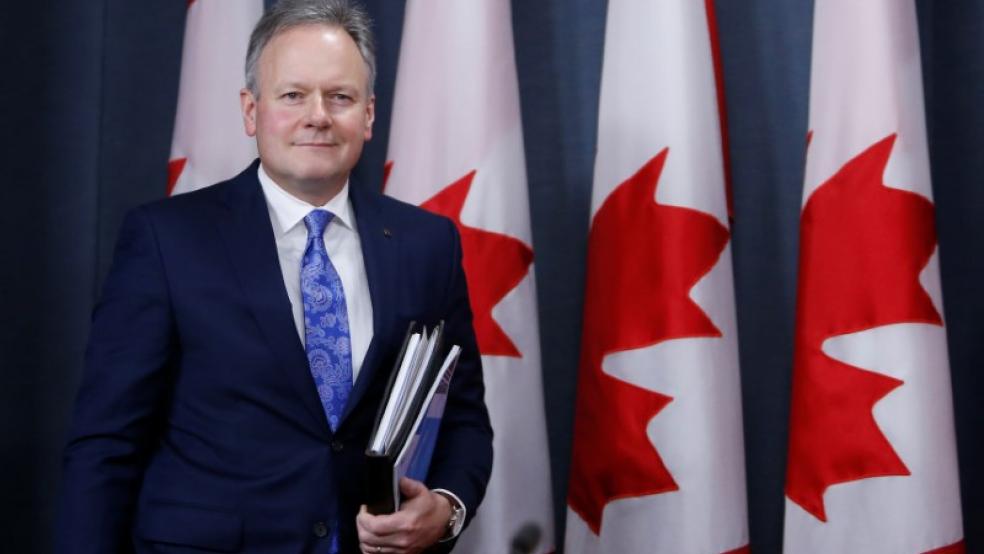OTTAWA (Reuters) - If anyone has an explanation why Canada's exports disappointed in the second quarter, the country’s central bank governor would like to know.
The Bank of Canada cut interest rates by a quarter point on Wednesday for the second time this year as the economy contracted in the first half after the anticipated pick up in non-energy exports failed to arrive. "The extent of the weakness is puzzling," the central bank said, as non-energy exports turned out to be weaker than could be explained by bad U.S. weather and general commodity weakness."We can attribute some of this. But a bunch of it we can't," Governor Stephen Poloz told reporters.Poloz, former head of the federal export development agency, speculated some of the problem may have been due to first quarter weakness in the United States, by far Canada's top export market, partly due to a West Coast port strike and inclement weather. When the bank stunned markets with a rate cut in January, Poloz at the time voiced optimism that the easing should sufficiently protect Canada's economy against any further headwinds. One of the things that have also changed since then was the extent to which oil companies have cut their investment plans in response to the crude price slump, Poloz said.Some analysts, however, see a pattern in recent years where the bank would be too optimistic in its forecasts and end up repeatedly pushing out the timing of when it expected the economy to return to full potential and inflation to its target. "Old habits die hard. I really think it's a consistent view that things are bad this quarter, next quarter, but things are going to get better," said Bank of America-Merrill Lynch senior economist Emanuella Enenajor in New York. "You always want to be a bit ahead of the curve and I think that's the challenge in having rosy forecasts in the future that allow you to avoid more aggressive policy easing today," she said. True to form, the central bank still maintains a base-case scenario that the "unexplained weakness" in non-energy exports is temporary and projects annualized quarterly growth almost doubling to nearly 3 percent throughout 2016 from 1.5 percent forecast for the third quarter.STRUCTURAL PROBLEMCanadian trade data sometimes are subject to heavy revisions and analysts are wondering whether the weakness in non-energy exports can be explained by rogue data or some other temporary factor, or whether something more worrying is going on. Some economists said the "puzzle" was not that much of a mystery, citing fading competitiveness and low business confidence that has not fully recovered yet from the global credit crisis. "There's a structural problem," said Standard Chartered Bank economist Thomas Costerg in New York. "For instance, you look at car sales and car exports to the U.S.," Costerg said. "Now Mexico has overtaken Canada, so even in that sector which has been doing quite well you're seeing some erosion of competitiveness." Wednesday's rate cut drove the Canadian dollar to a six year low, but some economists point out that the currency's earlier rise to a parity with the U.S. currency in 2013 had taken an estimated 20 percent of capacity out of the economy.The Canadian Manufacturers and Exporters, the nation's largest trade and industry association, said expectations of higher demand for Canadian exports driven by improving U.S. employment and wages have proven too optimistic. Rather than spending, many Americans took advantage of an improving economy to save or pay down debt, Jayson Myers, the association’s president said. Poloz has been frank about what the central bank does not know, despite deep drilling into export data.After a long explanation on what policymakers were looking at, he summed it up by telling a reporter: "If you get some good ideas, let me know." (Additional reporting by Susan Taylor and Alastair Sharp in Toronto; Editing by Amran Abocar and Tomasz Janowski)Bank of Canada stumped by ‘puzzle’ of stalled exports

Chris Wattie



